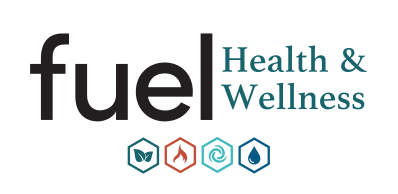We often view stretching as a momentary effort—a brief routine before a workout or a quick adjustment after a long day of sitting. However, this narrow perspective dramatically underestimates the profound, long-term impact that dedicated, professional Assisted Stretch Therapy can have on the human body, especially as we navigate the journey of aging. It is not merely about achieving a temporary gain in flexibility; it is a foundational, non-negotiable investment in your future self, directly affecting your ability to move freely, independently, and without chronic pain for decades to come. The goal is to move beyond temporary relief and unlock genuine, sustainable freedom of movement that enhances your healthspan.
The degradation of mobility is often mistakenly viewed as an unavoidable consequence of aging, but the science of connective tissue and neuromuscular communication suggests otherwise. With consistent, professionally guided therapy, the body’s innate ability to repair and adapt can be harnessed to maintain and even restore functional movement patterns. This article delves into the precise physiological mechanisms and long-term benefits that solidify consistent stretching as a cornerstone of modern aging wellness stretch strategies.
What Exactly Differentiates Professional Assisted Stretch Therapy from Standard Self-Stretching?

The core distinction between stretching on your own and engaging in professional assisted stretch therapy lies in the ability to safely and effectively overcome the body’s natural protective reflexes. When you stretch independently, your nervous system initiates a protective mechanism—the stretch reflex—that prevents your muscles from extending too far, halting progress prematurely. The strategic, expert intervention provided during professional assisted stretch therapy bypasses this limitation, delivering a depth of therapeutic elongation that self-stretching simply cannot replicate.
The techniques employed by a trained therapist are designed to work in synergy with your body’s physiology, unlocking greater ranges of motion with precision and control. This focused, one-on-one attention ensures that every muscle group is targeted optimally, addressing complex imbalances that contribute to stiffness and immobility. This is the difference between simply maintaining status quo and proactively improving your movement capabilities over time.
The Role of Proprioceptive Neuromuscular Facilitation (PNF)
Proprioceptive Neuromuscular Facilitation, or PNF, is a key advanced technique that trained assisted stretch therapists use to achieve significant and rapid gains in flexibility. This method strategically involves alternating cycles of passive stretching and muscle contraction, leveraging the body’s own neurological architecture. It is an extremely effective approach for improving range of motion.
The central mechanism of PNF relies on stimulating the Golgi Tendon Organs (GTOs), which are sensory receptors located within the muscle tendons. When tension on a muscle is held or contracted against resistance, the GTOs send a signal to the central nervous system that inhibits the muscle, forcing it to relax more completely. This phenomenon, known as autogenic inhibition, allows the muscle to be safely stretched beyond its normal self-imposed limit during the subsequent passive phase.
The Science of Muscle Spindles and GTOs
Understanding the interplay between muscle spindles and GTOs is critical to appreciating the value of expert manipulation. Muscle spindles detect the speed and magnitude of a stretch and trigger the protective stretch reflex, making your muscle contract to prevent injury. Conversely, GTOs function as a regulatory brake, overriding the spindle’s action when sufficient tension is applied.
A trained therapist, working within the professional framework of Fuel Health & Wellness, understands exactly how to apply controlled pressure and resistance to activate the GTOs effectively. This skilled manipulation gradually “resets” the nervous system’s tolerance for stretch over repeated sessions. Over time, the nervous system allows the muscle fibers to lengthen further and the connective tissues to become more compliant, leading to long-term improvements in extensibility and range of motion.
The Lifespan Impact: How Assisted Stretching Supports Mobility Longevity Benefits

The concept of mobility longevity benefits relates directly to retaining the ability to perform daily activities with grace and without assistance, which is the definition of a high healthspan. As we age, muscles lose mass and elasticity, tendons and ligaments shorten, and the body’s natural hydration decreases, collectively leading to a vicious cycle of stiffness and restricted movement. Consistent assisted stretching acts as a powerful intervention to interrupt and reverse this degenerative pattern.
When muscles are chronically tight, they exert undue pressure on surrounding joints, leading to cumulative wear and tear that accelerates joint degeneration. By restoring optimal muscle length, assisted stretching relieves this tension, allowing joints to function within their intended, natural mechanical pathways. This comprehensive approach to flexibility is what distinguishes therapeutic stretching from casual gym stretches.
Preserving Joint Health and Synovial Fluid
Joint immobility is not solely a function of cartilage loss; it is often exacerbated by the tightness of the muscles and capsules surrounding the joint. The movement achieved during assisted stretching promotes the circulation of synovial fluid, which is the critical, lubricant-like substance that nourishes the joint and reduces friction. Without regular movement through a full range of motion, this fluid thickens and stagnates.
Regularly moving the joints through an extended, assisted range of motion ensures that the cartilage receives the nutrients it needs and that the joint capsule remains supple. This mechanical stimulation is a vital component of preserving joint integrity, helping to ward off the stiffness and discomfort associated with common age-related conditions.
Combatting Myofascial Restriction
The fascia is a vast, interconnected web of connective tissue that wraps around muscles, organs, and bones, providing structural support throughout the entire body. When subjected to repetitive strain, inactivity, or injury, fascia can become dehydrated, dense, and rigid, developing restrictions or “adhesions” that severely limit movement and cause referred pain.
Assisted stretching techniques, especially those incorporating active movements and sustained pressure, are highly effective for Myofascial Release. A skilled stretch therapist uses precise angles to encourage this tissue to rehydrate and lengthen, restoring its natural, slippery glide between muscle layers. This “unzipping” of the fascial suit is crucial for relieving deep tension that cannot be addressed by superficial stretching alone.
Targeted Benefits for the Aging Body and Active Lifestyles
The impact of consistent stretch therapy transcends performance enhancement; for the aging population, it is a key preventative measure that dramatically improves the quality of life. The decline in functional flexibility directly contributes to reduced independence, making simple tasks like bending down to tie shoes, reaching for an item on a high shelf, or looking over one’s shoulder a challenge. Assisted stretch therapy ensures that these movements remain effortless.
For older adults, the focus shifts from maximal performance to maximal function, ensuring the body remains resilient and capable. Regular sessions address the specific muscle groups that become tightest with age, such as the hip flexors and pectorals, which tend to shorten due to prolonged sitting and gravity’s effects.
Reducing the Critical Risk of Falls and Enhancing Balance
Falls are a leading cause of serious injury and disability among older adults, and restricted mobility is a major contributing factor. Assisted stretching directly mitigates this risk by improving two key physical components: muscular symmetry and proprioception.
By systematically addressing muscle imbalances in the hips, legs, and torso, therapy ensures that weight is distributed evenly, creating a more stable base. Furthermore, the deep stretching stimulates proprioceptors—the sensory receptors that inform the brain about the body’s position in space. Enhanced proprioception translates to better body awareness, enabling quicker and more effective reactions to trips and stumbles, thus substantially reducing the risk of a fall.
Addressing Poor Posture and Spinal Alignment
Modern life, dominated by desk work, smartphones, and driving, fosters chronic postural dysfunction, characterized by rounded shoulders, a forward head position, and a strained lower back. These imbalances stem from tight muscles pulling the skeletal system out of its optimal alignment. For instance, tight hip flexors tilt the pelvis forward, forcing the lower back into an exaggerated curve.
Assisted stretching precisely targets the chronically shortened muscles, such as the anterior chest and the deep hip flexors, allowing them to lengthen and release their hold on the skeletal structure. This restoration of muscle equilibrium allows the body to naturally revert to a more upright, balanced posture, significantly reducing chronic neck, shoulder, and lower back pain. You can see the remarkable difference that targeted therapy makes in improving alignment after just a few sessions. If you’re interested in understanding how specific techniques are used to realign the spine, you should explore the deep insights available on Posture Benefits of Assisted Stretch Therapy.
The Crucial Link to Flexibility Over 50
Maintaining flexibility over 50 is perhaps the single most impactful indicator of long-term physical health. The ability to retain a full range of movement in the sixth decade of life is directly linked to better metabolic health and lower rates of cardiovascular disease. This is because flexible, pliable muscles are often associated with healthy, compliant arteries.
Consistent engagement in therapy ensures that the body’s connective tissues and muscle fibers retain their elasticity, countering the biological tendency toward hardening and shortening. This dedication to aging wellness stretch routines helps preserve the functional capacity needed to sustain active hobbies, travel, and exercise well into retirement years. The goal is to maximize your active years.
Systemic Health Advantages: Beyond Muscle Length

While the visible benefits of improved flexibility are easy to appreciate, the therapeutic impact of professional assisted stretching extends far deeper, influencing key physiological systems that govern overall health and recovery. These systemic benefits are what truly cement its role in a proactive health and wellness strategy.
The Role in Optimized Blood Flow and Circulation
Chronically tight muscles restrict the blood vessels running through them, impeding efficient circulation. This lack of proper flow means that muscles do not receive adequate oxygen and nutrients, and, crucially, metabolic waste products like lactic acid and cellular debris are not flushed out effectively. This contributes to persistent muscle soreness and delayed recovery.
During an assisted stretch session, the deliberate elongation of muscle and connective tissue fibers acts like a pump, gently massaging blood vessels and encouraging optimal flow. This enhanced vascularity delivers an immediate boost of oxygenated blood to the working muscles and, over time, contributes to superior cardiovascular function and overall tissue health. For a comprehensive breakdown of this systemic benefit, you should definitely check out the detailed guide on Circulation Benefits of Assisted Stretch Therapy.
Better Sleep Benefits of Assisted Stretch Therapy and Stress Reduction
Muscle tension is one of the body’s primary responses to psychological stress, leading to a constant, low-level activation of the sympathetic nervous system, often known as the “fight-or-flight” response. This state of persistent tension can make it incredibly difficult to relax, leading to insomnia, restless nights, and chronic fatigue.
The deep, passive nature of professional assisted stretching sessions is profoundly relaxing, acting as a powerful counter-stimulus. By physically releasing deep-seated tension, the therapy activates the parasympathetic nervous system—the “rest-and-digest” mechanism. This neurological shift helps to reduce stress hormones like cortisol and facilitates a state of deep calm, making it much easier to achieve restorative sleep. For a dedicated look at this aspect of wellness, take a moment to explore the specifics on Better Sleep Benefits of Assisted Stretch Therapy.
Safe Stretching Options for People with Chronic Pain
For individuals managing chronic musculoskeletal pain conditions such as fibromyalgia, osteoarthritis, or sciatica, the fear of exacerbating pain often leads to inactivity and further stiffness. However, gentle, controlled stretching is essential to preventing the progression of mobility decline.
Professional assisted stretch therapy offers a safe, non-judgmental environment where movements are controlled by an expert who understands pain thresholds and pathological limitations. Techniques can be customized to avoid painful ranges while still achieving therapeutic length in surrounding tissues, providing relief without risk. For tailored information on how professionals navigate these complexities, please consult the resource on Safe Stretching Options for People with Chronic Pain.
Assisted Stretch Therapy in Performance and Recovery
For athletes, whether competitive or amateur, Assisted Stretch Therapy is not a luxury but a strategic tool for maximizing output and ensuring longevity in their sport. It allows the body to function at peak mechanical efficiency, converting strength into powerful, injury-free movement.
The primary goal in a sports context is to achieve functional flexibility—the ability to move a joint through its required range of motion for a specific activity without restriction. This is what translates a gym-based workout into real-world performance gains on the field or court. At Fuel Health & Wellness, we prioritize not just the length of the muscle, but the total pliability and recovery capacity of the entire kinetic chain.
Assisted Stretching for Athletes and Active Lifestyles
High-intensity activities, repetitive motions, and heavy resistance training lead to micro-tears and subsequent shortening of muscle fibers and surrounding connective tissues. This is a natural part of the adaptation process, but without dedicated recovery, it leads to stiffness, muscle knots, and eventually, compromised performance.
Assisted stretching provides the precise intervention needed to restore optimal muscle length, allowing muscles to generate force more effectively. This enhanced muscular compliance means less energy is wasted fighting against internal resistance, leading to faster movement, greater power output, and improved stamina. If you are serious about optimizing your training regimen, a deeper dive into Assisted Stretching for Athletes and Active Lifestyles is highly recommended.
Accelerating Sports Injury Recovery
When an injury occurs, the surrounding muscles often tighten protectively, leading to guarding and stiffness that impede the healing process. Controlled assisted stretching is a critical component of post-rehabilitation recovery, working to gently restore tissue extensibility and range of motion.
The therapist can apply precise forces to the injured area’s connective tissues without overstressing the healing muscle or joint, helping to break down scar tissue and promote proper alignment of new collagen fibers. This controlled, progressive movement aids in faster return to activity by ensuring the rehabilitated area possesses the functional flexibility required for safe movement. Understanding this critical phase of healing is important, which is why we offer detailed information on the Role of Assisted Stretch Therapy in Sports Injury Recovery.
Injury Prevention for Runners with Stretch Therapy
Runners, in particular, are susceptible to common overuse injuries, often rooted in muscle imbalances and stiffness in the hips, hamstrings, and calves. These tight areas force the body to compensate, leading to problematic changes in gait and biomechanics that stress the knees, ankles, and feet.
Therapy specifically targets the muscles that become tight from the repetitive motion of running, such as the hip flexors and deep gluteal muscles. By ensuring optimal hip and hamstring mobility, a runner can achieve a longer, more efficient stride while reducing the excessive strain placed on stabilizing joints. To learn how focused therapy can protect your running journey, explore our guide on Injury Prevention for Runners with Stretch Therapy.
The Fuel Health & Wellness Approach to Personalized Care
At Fuel Health & Wellness, we recognize that no two bodies are exactly alike; every client arrives with a unique history of movement, injury, and tension patterns. Our therapeutic process begins with a comprehensive movement and postural assessment to identify the root causes of restriction, rather than just treating the symptoms of tightness. This initial phase ensures that every session is tailored for maximum long-term benefit.
Our certified stretch therapists are highly trained in multiple advanced modalities, including Proprioceptive Neuromuscular Facilitation (PNF), Active Isolated Stretching (AIS), and Fascial Stretch techniques. This multifaceted expertise allows us to seamlessly integrate the most effective method for your specific physiological needs, goals, and comfort level. We are committed to not just stretching your body, but educating you on how to sustain your new mobility, making you an active partner in your health journey. To discuss your specific needs and goals, we encourage you to contact us.
PNF Stretching vs. Traditional Assisted Stretch Therapy
While PNF is a technique used within assisted stretch therapy, it is not the only method employed. Assisted stretch therapy is an umbrella term encompassing many hands-on methods. Traditional assisted techniques might involve holding a passive stretch for a sustained period (static) or moving a limb through its range of motion (dynamic). PNF adds the element of active contraction against resistance, making it one of the most effective methods for rapid gains in flexibility.
The professional guidance ensures that the correct technique is chosen based on the client’s current flexibility, their muscle tolerance, and the desired outcome. For older clients, a gentler, sustained static or active-assisted approach may be prioritized, while athletes often benefit most from the intensive neurological reset offered by PNF. The true artistry lies in knowing which tool to use and when. For a detailed comparison of these methodologies, we invite you to review our dedicated resource on PNF Stretching vs. Traditional Assisted Stretch Therapy.
| Feature | Self-Stretching (Traditional) | Assisted Stretch Therapy (Professional) |
|---|---|---|
| Depth & Efficacy | Limited by the body’s natural stretch reflex. | Overcomes the stretch reflex via neurological techniques (PNF, GTO activation). |
| Techniques Used | Static holding, unguided dynamic movements. | PNF, Myofascial Release, AIS, Active-Assisted Stretching. |
| Safety & Form | High risk of overstretching or compensatory movement. | Expert guidance ensures optimal form and safety, minimizing injury risk. |
| Customization | Low; targets general muscle groups universally. | High; tailored to specific imbalances, posture, and medical history. |
| Longevity Impact | Maintenance of basic flexibility; minimal structural change. | Structural and neurological adaptation for long-term range of motion gains. |
Choosing the Right Professional
The expertise of the stretch therapist is paramount to the success of assisted stretch therapy. A skilled professional must possess a deep understanding of human anatomy, kinesiology, and the various neurological principles that govern muscle response. This knowledge is what allows them to differentiate between a client’s protective tension and true structural limitation, ensuring a safe and beneficial session.
It is vital to choose practitioners who are certified and have extensive hands-on experience in these specialized techniques. At Fuel Health & Wellness, our team holds advanced certifications and continuously updates their knowledge to provide the highest standard of care. We encourage all prospective clients to take the time to meet the team and understand the credentials and philosophy behind the care they receive.
Frequently Asked Questions (FAQs) About Assisted Stretch Therapy
1. How quickly will I see noticeable improvements in my mobility?
Most clients report feeling an immediate difference in lightness, reduced tension, and increased range of motion right after their very first assisted stretch session. However, long-term, structural changes—the permanent gain in flexibility and the “resetting” of your body’s stretch tolerance—typically require consistent, weekly or bi-weekly sessions over several months. Think of it as cumulative progress, where each session builds upon the last.
2. Is assisted stretch therapy painful or uncomfortable?
While you should expect to feel the sensation of a deep stretch—tension, not pain—the process should never be aggressive or intolerable. Our trained stretch therapists operate strictly within your personal comfort zone, using constant communication to ensure the stretch is both safe and effective. If you experience sharp or debilitating pain, the therapist will immediately modify the movement, making it an excellent experience for those with lower pain tolerances.
3. How often should I schedule an assisted stretch session for optimal results?
For individuals aiming to reverse significant chronic stiffness, restore mobility after an injury, or achieve high athletic performance, weekly sessions are generally recommended initially. Once desired functional flexibility is achieved, many clients move to maintenance sessions every two weeks. The ideal frequency ultimately depends on your lifestyle, activity level, and specific long-term mobility goals.
4. Can assisted stretching help me if I have arthritis or osteoporosis?
Yes, assisted stretching is often beneficial for managing the symptoms of conditions like arthritis by gently maintaining joint mobility and reducing muscle guarding around the affected joint. For osteoporosis, the therapy is conducted with extreme caution and specialized modifications, ensuring no pressure is placed on compromised bones. It is critical to communicate your full medical history so the therapist can tailor the routine for safety and benefit.
5. What is the difference between assisted stretch therapy and massage therapy?
While both promote physical recovery, they have different primary goals. Massage therapy focuses on manipulating soft tissues (muscles, tendons, ligaments) to increase blood flow, reduce tension, and release knots. Assisted stretch therapy focuses on achieving greater muscle length, increasing joint range of motion, and structurally improving flexibility through expert leverage and advanced neurological techniques like PNF. They are complementary therapies, often working best when integrated.
Conclusion: The Long-Term Promise of Assisted Stretch Therapy
Consistent, professional Assisted Stretch Therapy is a uniquely powerful tool for anyone committed to maximizing their long-term independence and quality of life. It works at a fundamental physiological level, retraining the nervous system, hydrating the fascia, and lubricating the joints to ensure a resilient, capable body for the journey ahead. The benefits extend far beyond mere muscle length, influencing balance, reducing systemic stress, and promoting overall tissue health. By embracing this proactive approach, you are not simply treating stiffness; you are actively investing in a future defined by unrestricted movement and vitality.
We, at Fuel Health & Wellness, believe that maintaining your mobility is the key to truly enjoying a long and active life. Whether you are an elite athlete seeking a performance edge or an older adult committed to retaining the functional independence that makes life rich, incorporating this therapy into your routine offers profound, measurable mobility longevity benefits. Start today by exploring the possibilities that dedicated, professional stretching can unlock for your body.


